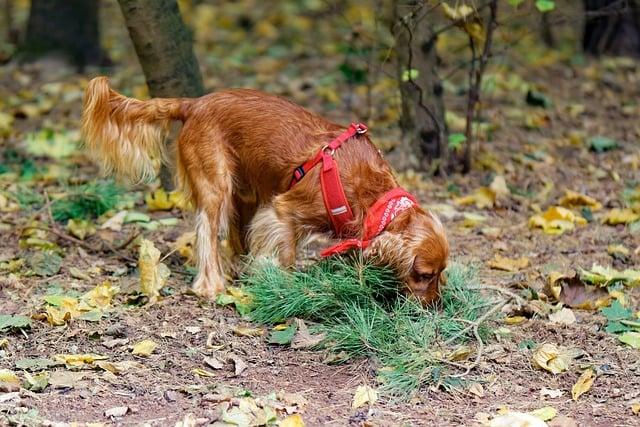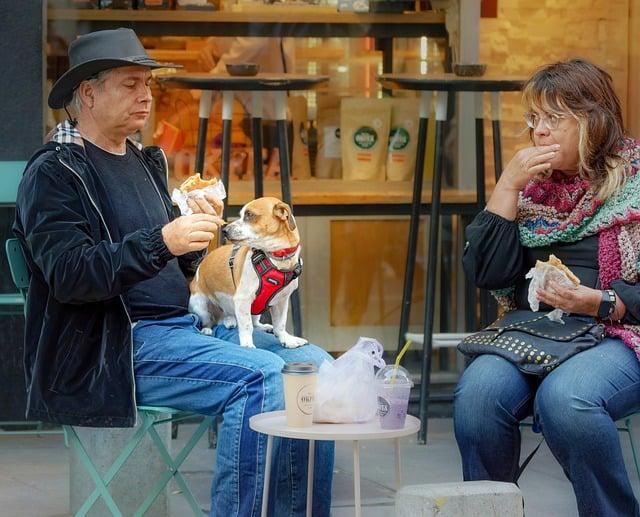Imagine a loyal dog, tail wagging with excitement as you toss their favorite toy across the yard. But what happens when that toy is suddenly gone? Dogs form deep emotional bonds with their belongings, and tossing away a cherished toy can leave them feeling confused and sad. They may not understand why their beloved plaything is gone, leading to feelings of loss. As responsible pet owners, it’s essential to recognize their emotions and consider donating old toys instead. This way, we can keep our furry friends happy while helping others in need.
Contents
- Understanding the Emotional Bond Between Dogs and Their Toys
- Recognizing Signs of Distress in Your Dog After Toy Disposal
- Strategies for Transitioning Your Dog to New Toys
- Fostering Emotional Well-Being in Dogs Through Thoughtful Playtime Choices
- Q&A
Understanding the Emotional Bond Between Dogs and Their Toys
The relationship between dogs and their toys is often underestimated, yet it plays a crucial role in their emotional well-being. Dogs are not just playful creatures; they form deep attachments to their toys, which can serve as sources of comfort, security, and joy. When a dog interacts with its favorite toy, it engages in a form of play that stimulates its mind and body, fostering a sense of happiness and contentment. This bond can be likened to that of a child with a beloved stuffed animal, where the toy becomes a trusted companion in times of solitude or stress.
When a toy is thrown away, the emotional impact on a dog can be significant. Many dogs exhibit signs of distress when they lose a cherished item, which can manifest in various ways. Common reactions include:
- Searching behavior: Dogs may frantically search for their missing toy, indicating their confusion and desire to reclaim it.
- Vocalizations: Whining or barking can occur as a way for the dog to express its sadness or frustration.
- Changes in behavior: A previously playful dog may become withdrawn or less active, reflecting its emotional state.
The emotional bond that dogs develop with their toys is often rooted in the memories and experiences associated with them. A toy that has been present during moments of play, comfort, or companionship can evoke feelings of nostalgia and attachment. This connection is not merely about the physical object; it encompasses the experiences shared between the dog and its owner, making the toy a symbol of love and care. Thus, when a toy is discarded, it can feel like a loss of a part of their world, leading to feelings of sadness and abandonment.
Understanding this emotional connection can help pet owners make more informed decisions about their dog’s toys. Instead of simply throwing away a worn-out toy, consider alternatives such as:
- Repairing: Mending a favorite toy can preserve the bond while ensuring it remains safe for play.
- Recycling: If a toy must go, consider donating it to a local shelter, allowing another dog to enjoy it.
- Introducing new toys gradually: This can help ease the transition and maintain your dog’s emotional stability.
Recognizing Signs of Distress in Your Dog After Toy Disposal
When you decide to part ways with your dog’s favorite toys, it’s essential to observe their behavior closely. Dogs are sensitive creatures, and their emotional responses can manifest in various ways. Look for signs such as **withdrawal** or **lack of interest** in activities they usually enjoy. If your dog suddenly becomes less playful or seems to retreat to a quiet corner, it may indicate that they are feeling the loss of their beloved toy.
Another common sign of distress is **excessive vocalization**. If your dog begins to whine, bark, or howl more than usual after the toy disposal, it could be their way of expressing confusion or sadness. Pay attention to these vocal cues, as they can be a clear indication that your furry friend is struggling to cope with the change. Additionally, you might notice changes in their **eating habits**; a dog that suddenly loses interest in food may be experiencing emotional turmoil.
Physical signs can also provide insight into your dog’s emotional state. Watch for behaviors such as **panting**, **shaking**, or **restlessness**. These physical manifestations can indicate anxiety or stress related to the loss of their toy. Furthermore, if your dog starts to engage in destructive behaviors, such as chewing on furniture or other items, it may be a sign that they are trying to cope with their feelings inappropriately.
Lastly, consider the importance of **routine** in your dog’s life. If the disposal of a toy disrupts their daily activities or playtime, it could lead to feelings of insecurity. Maintaining a consistent routine can help alleviate some of the distress your dog may feel. Incorporating new toys or engaging in interactive play can also provide a positive distraction and help your dog adjust to the change more smoothly.
Strategies for Transitioning Your Dog to New Toys
Transitioning your dog to new toys can be a delicate process, but with the right strategies, it can also be an enjoyable experience for both you and your furry friend. Start by introducing the new toys gradually. Instead of tossing out the old toys all at once, consider rotating them. This method allows your dog to become accustomed to the new toys while still having access to familiar ones, reducing any potential anxiety.
Engage your dog’s curiosity by making the new toys more appealing. You can do this by playing interactive games that involve the new toys, such as fetch or tug-of-war. This not only helps your dog associate the new toys with fun but also strengthens your bond. Additionally, consider using treats to create a positive reinforcement loop; reward your dog for showing interest in the new toys to encourage exploration and play.
Another effective strategy is to create a designated playtime for the new toys. Set aside specific times during the day when you can focus solely on playing with the new items. This routine can help your dog understand that these toys are part of their playtime experience. Make sure to keep the sessions short and engaging to maintain your dog’s interest and excitement.
Lastly, observe your dog’s reactions and preferences closely. Every dog is unique, and some may take to new toys faster than others. If you notice your dog is hesitant or uninterested, don’t force the issue. Instead, try different types of toys—such as squeaky, plush, or chewable options—to find what resonates best with your pet. Remember, the goal is to make the transition as smooth and enjoyable as possible, ensuring that your dog feels loved and secure throughout the process.
Fostering Emotional Well-Being in Dogs Through Thoughtful Playtime Choices
Understanding the emotional landscape of our canine companions is essential for fostering their overall well-being. When we consider playtime, it’s not just about physical activity; it’s also about emotional engagement. Thoughtful choices in toys and play activities can significantly enhance a dog’s mood and reduce feelings of sadness or anxiety. By selecting toys that stimulate their natural instincts and provide comfort, we can create a more fulfilling play experience.
Dogs thrive on routine and familiarity, and their toys often become a source of comfort. When a beloved toy is discarded, it can lead to feelings of loss and confusion. To mitigate this, consider introducing a variety of toys that cater to different play styles. **Rotating toys** can keep playtime exciting while allowing your dog to maintain a connection with their favorites. Here are some ideas for thoughtful playtime choices:
- Interactive toys: Engage your dog’s mind and body with puzzle toys that challenge them to think and problem-solve.
- Comfort toys: Soft toys that mimic the texture of their favorite items can provide emotional support, especially during stressful times.
- Fetch toys: Durable balls or frisbees can satisfy their instinct to chase and retrieve, promoting physical exercise and bonding.
Moreover, incorporating playtime into your daily routine can strengthen the emotional bond between you and your dog. Regular interaction through play not only alleviates feelings of sadness but also reinforces trust and security. Pay attention to your dog’s preferences and behaviors during play; this will help you tailor activities that resonate with their unique personality. By being mindful of their emotional needs, we can ensure that playtime is not just a physical outlet but a vital component of their happiness.
Q&A
-
Do dogs understand when their toys are thrown away?
Dogs may not fully comprehend the concept of throwing away toys, but they can certainly recognize the absence of their favorite items. This can lead to feelings of confusion or sadness, as they often associate their toys with playtime and companionship.
-
Can throwing away toys affect a dog’s emotional well-being?
Yes, removing a beloved toy can impact a dog’s emotional state. Dogs thrive on routine and familiarity, and losing a toy can disrupt their sense of security, potentially leading to anxiety or sadness.
-
What signs might indicate that a dog is sad about a lost toy?
Signs of sadness in dogs can include:
- Increased lethargy
- Loss of interest in play
- Whining or vocalization
- Seeking more attention from their owner
-
How can I help my dog cope with the loss of a toy?
To help your dog adjust, consider the following:
- Introduce a new toy to spark interest
- Engage in more interactive playtime
- Provide comfort through extra affection and attention
- Consider donating old toys instead of throwing them away to maintain a sense of familiarity
while dogs may not experience sadness in the same way humans do, they can certainly feel a sense of loss when their beloved toys are discarded. Understanding their emotional needs can strengthen your bond and enhance their well-being. Choose wisely!

大家好,我是彼得潘,專業的手法身體治療師。我喜歡探索和研究各種主題,並透過與人工智慧的合作分享專業、實用、有趣的文章。我們定期進行人工審核,以確保內容的準確性。如果您發現文章中有任何不準確的地方,請隨時與我們聯繫,我們會及時糾正。您可以透過 [email protected] 與我們聯繫。



